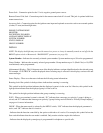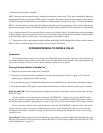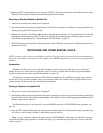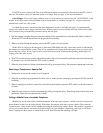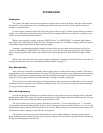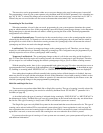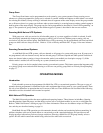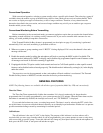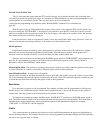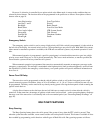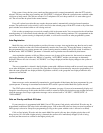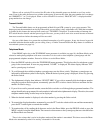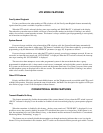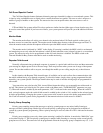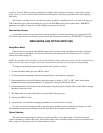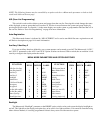Proceed (Clear-To-Talk) Tone
This is a short tone that sounds when the PTT switch is pressed, and it indicates that the radio system has been
successfully accessed and speaking can begin. It is standard on LTR and Multi-Net systems and programmable by your
system operator on conventional systems. This and other tones can also be disabled by
system operator programming or by the Menu mode “RADIO SNDS” parameter if it is selectable (see
page 48).
With all types of calls on LTR and Multi-Net systems, if the system is busy when the PTT switch is pressed, the
busy tone sounds and “SYSTEM BSY” is displayed. If you continue to press the PTT switch, the system is accessed
when it is available and the proceed tone sounds. If an out-of-range or some other error condition exists, the intercept
tone sounds and the error condition is displayed.
If the proceed tone is used on conventional systems, it does not sound if the system is busy. However, it does not
indicate conventional out-of-range conditions, so it sounds even if that condition exists.
Horn/Light Alert
If this feature has been installed by your system operator, it activates an alert such as the vehicle horn or lights
when calls are received on groups programmed for this feature. When the alert is enabled and the proper call is
received, it turns on once per second for 3 seconds and then goes back to the disabled state.
The horn alert on-off mode can be changed by the HORN option switch or “HORN/LIGHT” menu parameter (see
page 43). It is programmed to operate in one of the modes described below. Ignition switch control of power is
described in “Power Turn-Off Delay” which follows.
Manual Off/On Mode - The mode does not change when power is turned on and off by either the ignition switch or pow-
er switch. Therefore, it is entirely controlled by either the option switch or menu parameter.
Auto Off and On Mode - It always turns off when the
ignition switch is turned on, and then automatically back on again when the switch is turned off (if there is a turn-off de-
lay). It also automatically turns off if power is turned on by the power switch. This automatic operation overrides any off-
on mode that may have been selected by the option switch or menu parameter.
Bank Select
Up to ten banks of systems can be programmed. For example, one bank could be programmed for Chicago and
another for St. Louis. Each bank contains a unique set of systems that may or may not be the same as the systems in
another bank. Only the systems in the current bank can be selected or scanned.
To change from one bank to another, the Menu mode “BANK SELCT” parameter or the BANK option switch is
used. The Select switch is turned to move to the desired bank and then pressed to select that bank. The current bank is
identified by the unique identification which momentarily appears in the alphanumeric display. For example,
“CHICAGO” or “ST LOUIS” could be displayed.
Profile
Your system operator can program your transceiver with a profile that determines the power-on configuration of
several operating functions. For example, the transceiver can be programmed so that the backlight and Horn/Light func-
tion are on and a specific bank is selected.



